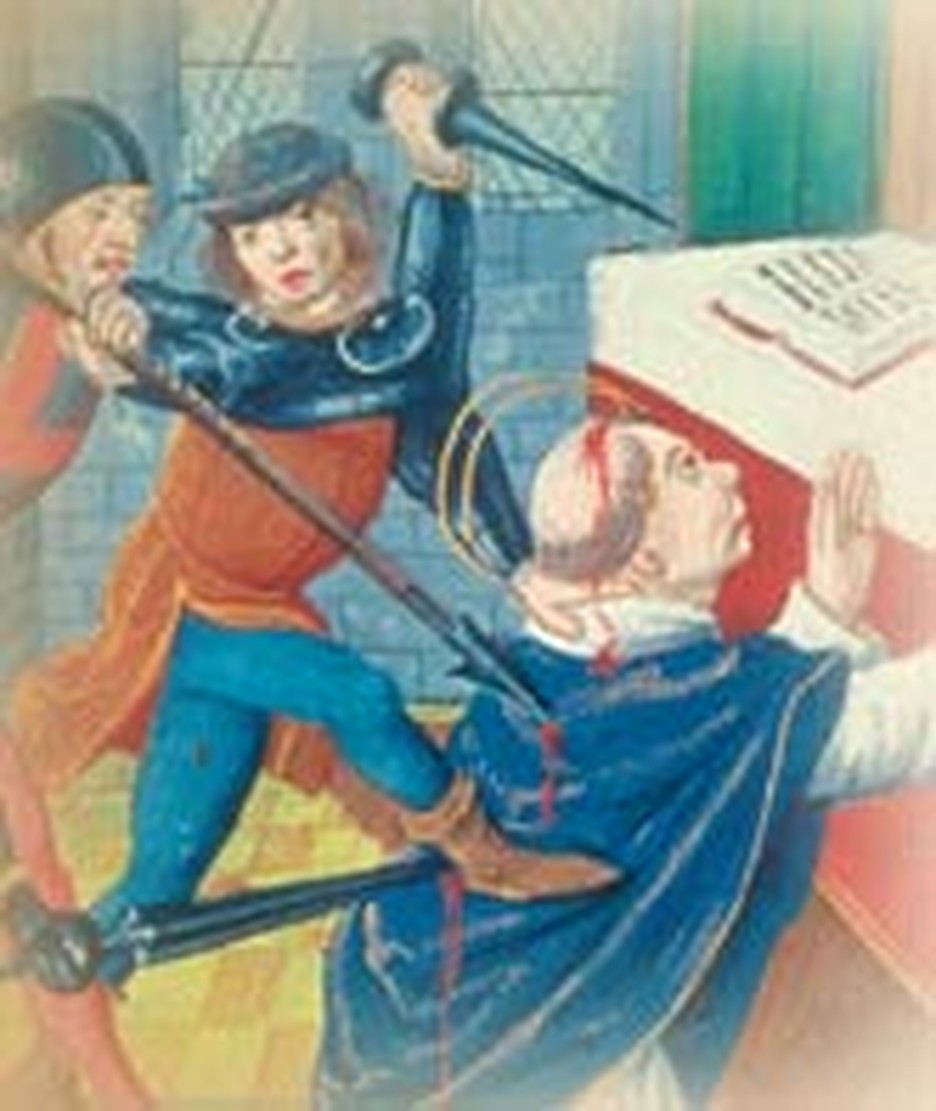
Katherine von Bora was only eighteen at the time Martin Luther issued his now famous 95 theses from Wittenburg. She had lived in a convent since she was three; her father had taken her there after her mother's death. Catherine and several of the other nuns at the cloister heard of Luther's Biblical teaching. Once they believed the principles Luther taught, they wanted to leave the cloisters. When Luther heard of this, he encouraged a merchant friend to help them escape.
Merchant Kopp often delivered herring to the convent, and one evening in 1523, he bundled twelve nuns into his wagon in the empty fish barrels! Several of the nuns returned to their families; Luther helped find homes, husbands, or positions for the rest.

Within two years after their escape, all the nuns had been provided for except one--Catherine. Gradually, through the persuasion of friends and his father, Luther proposed to marry Katie himself.
Luther had been given the building of the Augustinian monastery at Wittenburg by the Elector, and into the monastery Katie moved after her marriage in 1525. She cleaned up the monastery and brought some order to Luther's daily life. Luther wrote a friend, "There is a lot to get used to in the first year of marriage. One wakes up in the morning and finds a pair of pigtails on the pillow which were not there before." After a year of marriage Luther wrote another friend, "My Katie is in all things so obliging and pleasing to me that I would not exchange my poverty for the riches of Croesus." Luther, the former celibate monk, now exalted marriage, exclaiming, "There is no bond on earth so sweet, nor any separation so bitter, as that which occurs in a good marriage."
Katie managed the finances of the family and helped free Luther's mind for his work of writing, teaching, and ministering. Luther called her the "morning star of Wittenberg" since she rose at 4 a.m. to care for her many responsibilities. She took care of the vegetable garden, orchard, fishpond, and barnyard animals, even to the butchering of them herself. Often there were as many as 30 students, guests, or boarders staying in the monastery, all of whom came under Katie's care. Luther was often ill, and Katie was able to minister to him in his illnesses because of her great medical skill. Katie's life was not just concerned with the physical, however. Martin encouraged his Katie in her Bible study and suggested particular passages for her to memorize.
In time the Luthers had six children and also raised four orphan children; the family became a model for German families for several centuries. Luther viewed marriage as a school for character. Family life helped train Christians in the virtues of fortitude, patience, charity, and humility.
After Martin's death in 1546, Katie lived six years. She lived to see her children, except Magdalena who had died young, achieve positions of influence.
DISTANT DATELINE: Archbishop of Canterbury Murdered!
CANTERBURY, December, 1170. Who would have ever thought it could come to this? Tension and disputes over jurisdiction and power between the church and state have existed for centuries. It seems a never ending battle. But last night the unthinkable happened! Thomas Becket, Archbishop of Canterbury, was savagely murdered--in the cathedral--at the altar--where he came to pray. And it is suspected that King Henry II was behind it!
The tension between King and Archbishop is public knowledge. Becket had only just recently returned from exile in France.
Ironically, before his ordination, Becket was a close friend of the king, joining him in his amusements, both good and bad. Henry installed him as Chancellor of England and was sure Becket would be a safe and reliable appointee as Archbishop of Canterbury.
But once in his office as highest church official in the land, something happened to Becket. He took his duties and service to God with utmost seriousness, even if it meant resisting the king over principles and issues of church and state.
In a moment of exasperation over Becket King Henry is said to have muttered, "Will no one rid me of this turbulent priest?" Four of Henry's knights took this as an instruction and burst into the Cathedral and killed Becket. Thomas apparently offered no resistance but accepted death calmly--almost as if he expected it.
Editor's Postscript: On July 12, 1174 King Henry II did penance at the tomb of Becket. Historian Philip Schaff commented that "no deeper humiliation of king before priest is recorded in history."



.jpg)